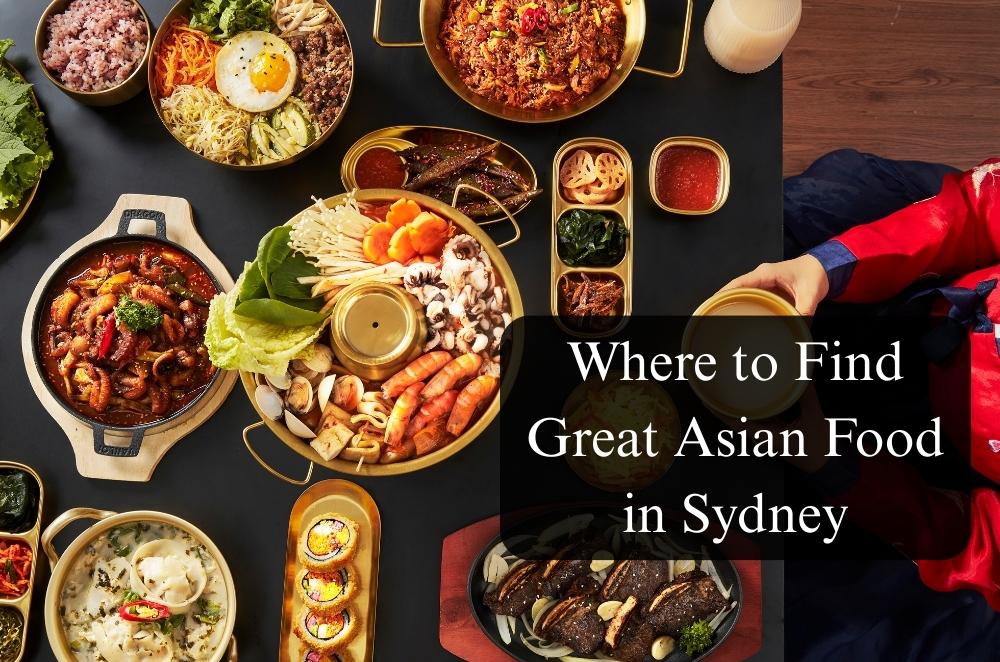Where to Find Great Asian Food in Sydney

Sydney’s incredible mix of kitchens, market stalls, and tiny family counters means “great” can look different from block to block. The trick is knowing how to read the cues—menu focus, turnover, and care with the little things—so you don’t leave it to chance. Suppose you’re short on time, keeping a shortlist of dependable operators helps, especially when you’re hunting for the best asian food in Sydney on a weekday. Think textures that hold, broths that stay clean, and produce that’s treated with respect. Get those right and the rest usually falls into place.
What ‘great’ Asian food looks like in Sydney
Great isn’t code for fancy; it’s a pattern of small, consistent habits. A place that does one thing well, every day, will usually beat a venue chasing twenty cuisines at once. Use your senses, not just photos.
-
Fresh balance: Stock tastes clean, herbs are lively, and nothing leans too salty or sweet.
-
Focused menu: Short lists with regional backbone beat sprawling menus that stretch too thin.
-
Hot-to-cold care: Fried dishes stay crisp, cold salads stay bright, and rice isn’t drying on the pass.
-
Turnover tells: Busy but calm service, small prep batches, and no tired garnishes hanging around.
I learned this the hard way during a late lunch in the city: quick glance, long menu, flat flavours. The humbler spot two doors down had a tiny selection and ran out by mid-afternoon—everything tasted like someone cared. That’s the thread to follow around town.
Neighbourhood patterns: where flavours cluster
Sydney’s flavour map isn’t random. Certain suburbs became hubs because communities built the demand, and suppliers set up nearby. You don’t have to know every street; just read the broad shapes and dive deeper from there.
-
City core: Small counters and hawker-style stalls feed the lunch crush with tight, repeatable dishes.
-
Inner west: Casual rooms focus on regional dishes and smart vegan riffs without turning gimmicky.
-
North shore: Family eateries lean classic, with broths and barbecue that reward patience over flash.
-
West and beyond: Mall food courts carry serious talent; queues move fast when the line knows what’s good.
Patterns help narrow choices, but don’t lock you in. A single dish worth crossing town for can live anywhere. When you find a venue that sticks to its lane and serves with quiet confidence, follow that signal; it usually points to a kitchen that respects the craft as much as the crowd.
Ordering smarter: dine-in, takeaway, and delivery
The same dish can travel well or poorly depending on packaging, timing, and the route home. A little planning turns “soggy by the couch” into “still crisp at the table.” You want heat where it matters and separation when texture is the hero.
-
Travel tracking: Soups in sturdy containers, fried items vented, and sauces kept on the side where needed.
-
Time window: Ten to twenty minutes is the sweet spot; beyond that, choose braises or noodle soups.
-
Portion sense: Smaller sets stay fresher; add rice and greens rather than oversizing a single dish.
-
Reheat method: Gentle oven for crisp items, quick pan flash for noodles, never microwave herbs.
If you care about standards that underpin safe, consistent takeaway, regulatory guidance around Asian food takeaway helps frame why packaging, temperature, and clear labelling matter. It’s not about being fussy; it’s how flavour and texture survive the trip home.
Budget, value, and how to spot quality
Value isn’t the cheapest total; it’s what still tastes sharp after the first few bites. A good rule of thumb is to pay for care: smaller menus, tidy stations, and staff who can explain a dish without guessing. That’s where your dollars stretch.
-
Ingredient signals: Leafy herbs look fresh, seafood smells clean, and oils aren’t cloudy or tired.
-
Rice matters: Grains hold shape, stay fragrant, and don’t clump—especially in takeaway sets.
-
Queue logic: Short, steady lines beat chaotic waits; rhythm hints at practised service and timing.
-
Payment calm: Clear pricing and no surprises; add-ons are optional, not sneaky defaults.
On one weeknight, I watched a cook reject a pan of overcooked greens rather than “make it work.” The replacement took two minutes and lifted the whole plate. That quiet discipline is why regulars come back. If you’re also stocking your pantry between meals, this reflection on Asian food online in Australia shows how a few smart staples make weeknight cooking faster and brighter.
Little extras that elevate the experience
Small decisions add up—condiments that cut through richness, sides that travel well, or a dessert that stays intact until you’re home. These touches aren’t garnish; they’re the difference between a decent feed and a memorable one.
-
Sauce sense: Lime, vinegar, or pickles reset the palate, letting you enjoy richer dishes longer.
-
Textural play: A crisp side or fresh herb salad stops heavy mains from feeling monotonous.
-
Smart sweets: Sticky rice, chilled jellies, or fruit-focused desserts ride better than dairy-heavy options.
-
Drink pairing: Tea or lightly sweet drinks complement spice without overwhelming subtler notes.
If you follow regional cues, you’ll spot combinations that locals treat as non-negotiable. That’s where the learning is: not trends, just lived-in wisdom. For a wider lens on the country’s tastes, a snapshot of asian food in Australia can help you see how city habits fit into a bigger picture.
Bringing it together for confident choices
Start with the basics—clean broths, lively herbs, and well-cooked rice—then read the signals: a focused menu, tidy prep, and a steady queue. Choose dishes that travel well if you’re heading home, and keep portions sensible so textures survive the journey. Value shows up as care, not just price; kitchens with calm rhythm and honest portions are the ones you remember. Over time, you’ll build a personal map of reliable spots across the city, and the guesswork fades. That’s the sweet spot: good food, fewer misfires, and dinners that feel easy whether you sit in, carry out, or share at home.






